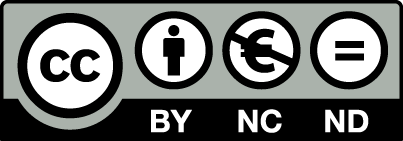Please use this identifier to cite or link to this item:
http://hdl.handle.net/2445/175656Full metadata record
| DC Field | Value | Language |
|---|---|---|
| dc.contributor.advisor | Bofill i Villà, Josep M. | - |
| dc.contributor.author | Barber Andreo, Albert | - |
| dc.date.accessioned | 2021-03-24T15:35:13Z | - |
| dc.date.available | 2021-03-24T15:35:13Z | - |
| dc.date.issued | 2020-06 | - |
| dc.identifier.uri | http://hdl.handle.net/2445/175656 | - |
| dc.description | Treballs Finals de Grau de Química, Facultat de Química, Universitat de Barcelona, Any: 2020, Tutor: Josep Maria Bofill Villà | ca |
| dc.description.abstract | The catalysis is one of the most important areas for the reaction synthesis and mechanists. Actually, there are thousand types of different catalysts. As we all know, a catalyst is a substance that increases the reaction rate but without reacting with the reagents and without modifying the course of the reaction. According to this definition, there is a new type of catalyst that we will probably use in the future: an Oriented External Electric Field (OEEF). In this research we study the general effects of an OEEF on the reactions and applied to different types of bonds. From this first application of the OEEF we extracted the Shaik rules, which are general rules about the OEEF effects in all type of bonds we know about. Secondly, we look at the Valance Bond (VB) diagrams, what they are and how to build them. This is a really good tool to understand which are all the structures involved in a reaction, plus the reagents and products, how intermediates appear and how we obtain the energy profile of any reaction (which we all know and have studied). Furthermore, we study the effect of the dipole moment in the opposite direction to the OEEF. The VB diagram model is the basic model to understand the Shaik rules for OEEF. We applied all this knowledge in four reactions: Diels-Alder reaction, Menshutkin reaction (SN2), benzene nucleophilic aromatic substitution (SNAr) and cyclobutene ring opening reaction by conrotatory rotation. We study the effects of the OEEF and how the reagents substituents can affect on this reactions, resulting in catalysis or inhibition. With all the initial knowledge and the new one acquired we study the cyclobutene ring opening reaction by disrotatory rotation and how the OEEF affects this reaction. We propose how to apply them so that the reaction goes from forbidden to allowed, something that no one has done before. Finally, we can say that we study the OEEF and its applications, a new type of catalyst that has many possibilities despite its possible negative effects. | ca |
| dc.format.extent | 53 p. | - |
| dc.format.mimetype | application/pdf | - |
| dc.language.iso | eng | ca |
| dc.rights | cc-by-nc-nd (c) Barber, 2020 | - |
| dc.rights.uri | http://creativecommons.org/licenses/by-nc-nd/3.0/es/ | * |
| dc.source | Treballs Finals de Grau (TFG) - Química | - |
| dc.subject.classification | Reactivitat (Química) | cat |
| dc.subject.classification | Camps elèctrics | cat |
| dc.subject.classification | Catalitzadors | cat |
| dc.subject.classification | Treballs de fi de grau | cat |
| dc.subject.other | Reactivity (Chemistry) | eng |
| dc.subject.other | Electric fields | eng |
| dc.subject.other | Catalysts | eng |
| dc.subject.other | Bachelor's theses | - |
| dc.title | The electric field and the chemical reactions: A new catalyst or an inhibidor? | eng |
| dc.title.alternative | El camp elèctric i les reaccions químiques: Un nou catalitzador o un inhibidor? | ca |
| dc.type | info:eu-repo/semantics/bachelorThesis | ca |
| dc.rights.accessRights | info:eu-repo/semantics/openAccess | ca |
| Appears in Collections: | Treballs Finals de Grau (TFG) - Química | |
Files in This Item:
| File | Description | Size | Format | |
|---|---|---|---|---|
| TFG_QU BarberAndreo,Albert.pdf | 1.47 MB | Adobe PDF | View/Open |
This item is licensed under a
Creative Commons License



